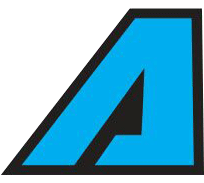RC Basics: Basic Parts Of A Typical Multirotor/Quadcopter
So here is the basic components of a quadcopter, simply to get it up and flying!
1. Multirotor frame
The frame of your multirotor will define the size, features, and the shape of your model. The frame holds all of the electronics that's needed to get it off the ground. While different frame shapes and sizes will have different effects on the flight characteristics, it ultimately comes down to the physical appeal and aesthetic quality. If you like the way it looks, go for it! Usually, the frames come in G10 plastic, carbon fiber, or 3D printed plastics.
2. Radio Equipment
A transmitter is needed to control your aircraft. Something like the FlySky i10, i6, or the RadioLink AT9 would do well to kick off this flying hobby. The best thing about these is that they come with Receivers, which transfers your commands from the Transmitter to your aircraft.
3. Power System
This is the power-house that actually lifts your multirotor off the ground. It's going to be composed of a few different things. The motor is the part that spins your propellers, which lifts your multirotor. You will also need ESCs to control the speed at which your motors spin. These are really important parts in the multirotor! Last but not least, you'll need LiPo batteries to power your multirotor.
4. Flight Controller
Flight controller is the brain of the multirotor. Everything you do translates into the flight controller before it's done. The "brain" interpets your commands and provides your ESCs and motors with the directions to tilt forward, hover, or stop. One popular flight controller that's known for how easy it is to set-up is the CC3D flight controller.
This is all you'll need to get a fully functional multirotor working! Just have to build it and put it together! If you want FPV (first-person view) functionality on it though, you'll need a few more parts!
Optional: FPV Gear
First off, you'll need your FPV camera and vTx (video transmitter). The FPV camera is what your eyes when flying FPV. The vTx transmits what your camera is seeing to your vRx (video receiver). Your vRx will be hooked up to your display, whether it's your FPV goggles or LCD screen! The good thing about Fat Shark's goggles, like the Predator V2, is that it comes with all the FPV gear needed to hook up to your multirotor to get flying!
So there you have it. If you're looking for some multirotor parts, check out our Shop Now link below!
ByChristopher Chu
Tags :RC Basics, Tutorial, FPV, quadcopter, multirotor, multicopter
Share:http://asiate.es/read?l=7WUW_X7VT32



















